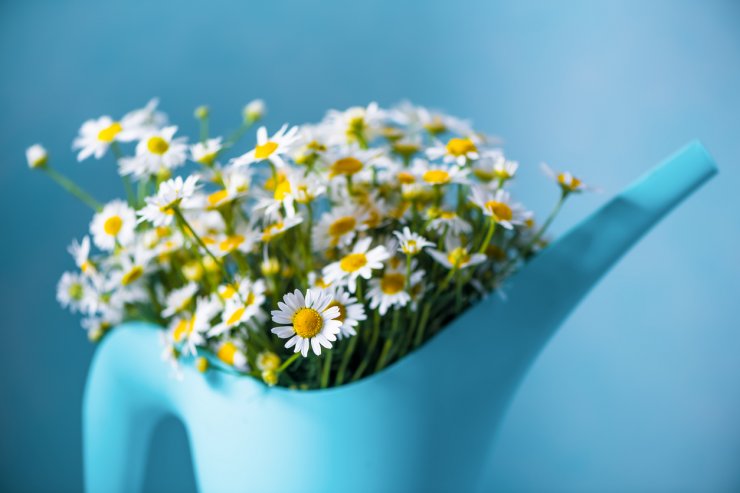
Chamomile in watering can.
Remember, chamomile is a plant-it-and-forget-it kind of plant (except for that initial seedling thinning). You can ignore it most of the time and it will be fine. If you haven’t had decent rainfall in the last week, then give your plants a long drink of water—but no more than once a week. It’s drought-tolerant, so go easy on the water. Want a low-tech way to see if your plants are thirsty? Stick your finger in the soil. If the top half inch of soil is dry, give your plants a drink. Be sure to water at the soil line rather than spraying the whole plant; if you do water by spraying, do it early in the day so the water can evaporate off the plants and prevent potential rot.
Your plants need about an inch of water total each week. The best way to assess whether they’ve been getting enough water is to set up a rain gauge in your garden. A quick check of the rain gauge will guide your watering for the week. Empty your rain gauge after each watering so you can get an accurate measurement for the following week.
Mulching is one way to help the soil retain some moisture, and it also helps prevent weeds from sprouting. Mulch also helps maintain an even soil temperature; if you have especially hot days, mulch can be a benefit to your plants and can help prevent moisture loss. An organic mulch made of bark or shredded leaves will give you a natural look, and will ultimately improve the soil as it breaks down over time. Always keep mulch off the plant’s stems to prevent the likelihood of rot.
How often do you water your chamomile plants? And what time of day do you water? Please tell us how you ensure that your chamomile plants get the right amount of water.


 Previous
Previous

